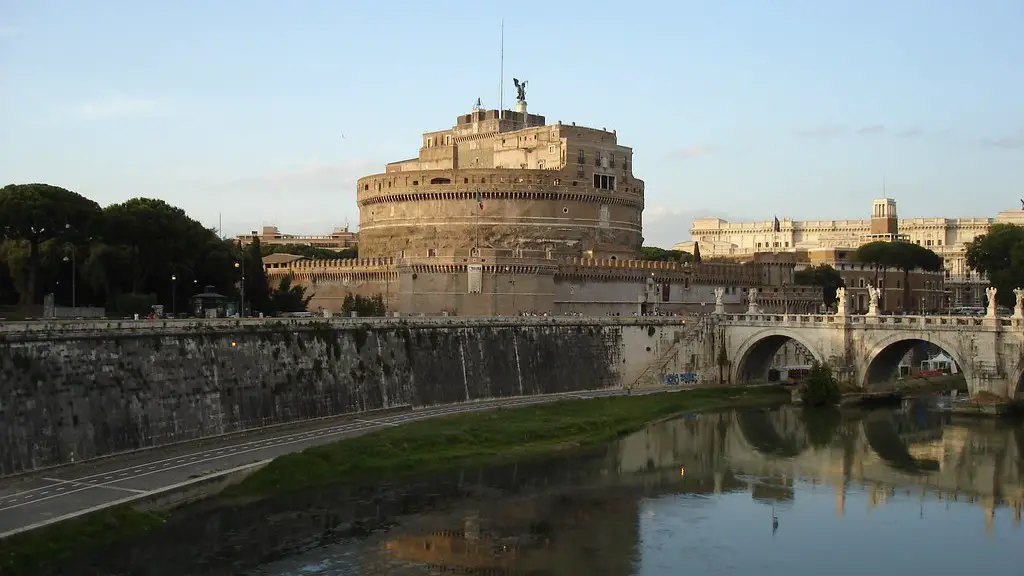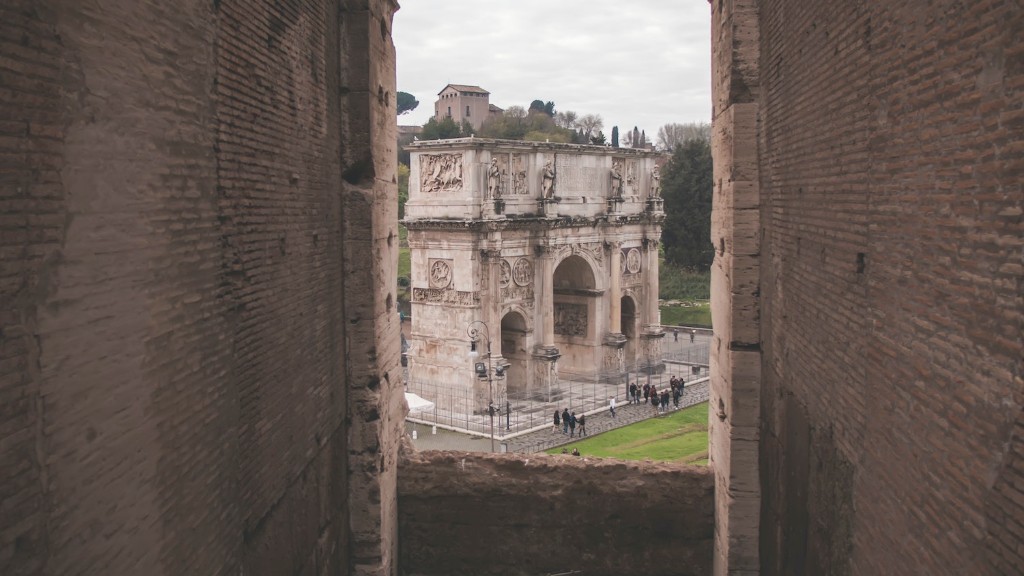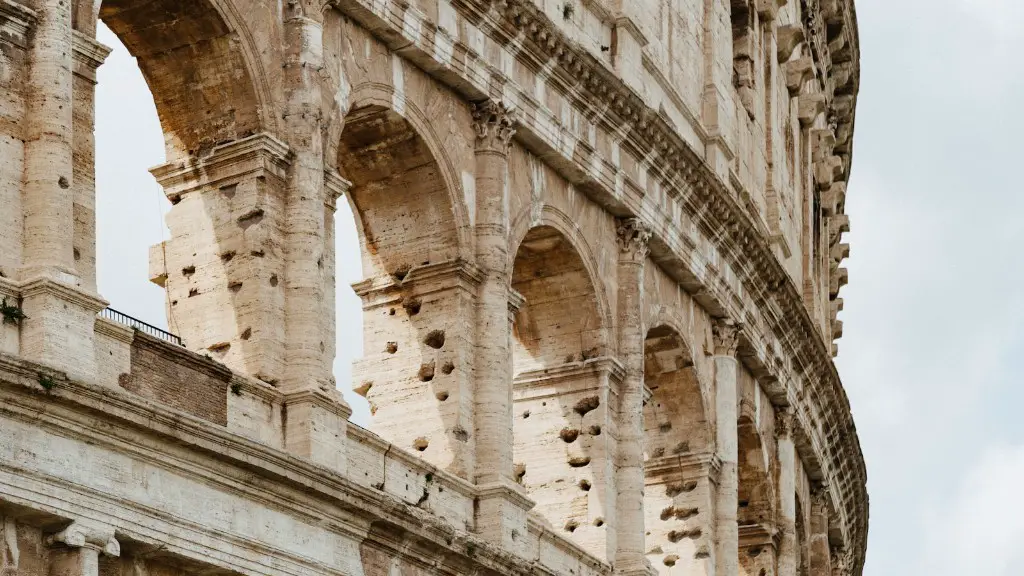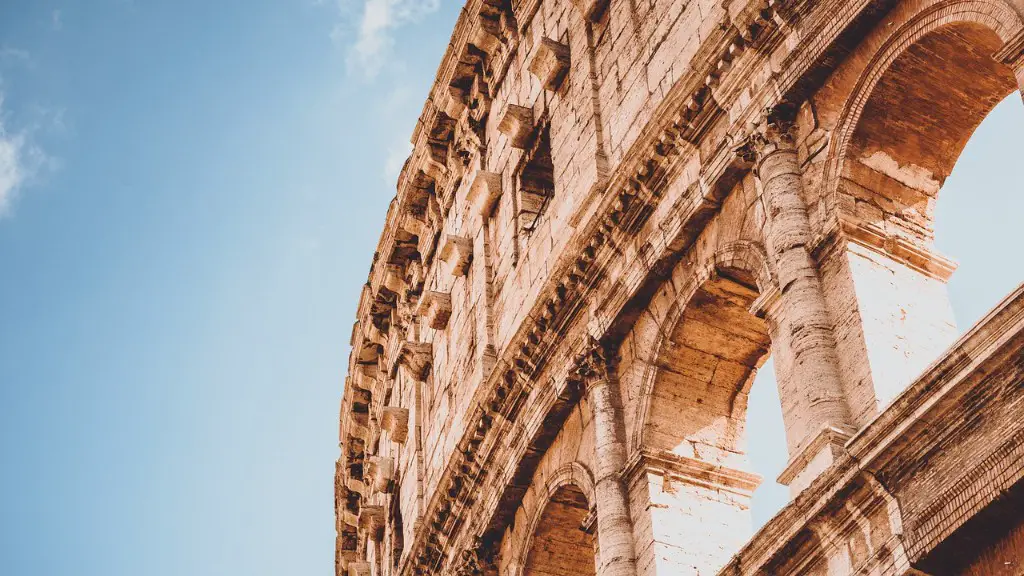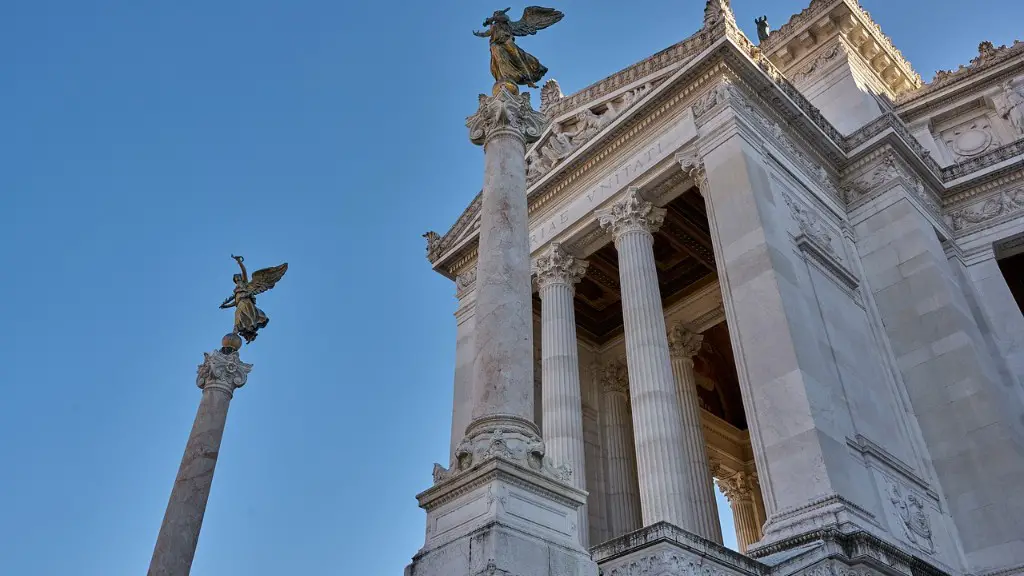The Roman baths have long been famous for their size and magnificence. Ancient Rome’s public bathing scene was an important part of daily life and culture, and some of these baths were massive. The biggest baths in Ancient Rome could hold up to thousands of people. They were not only a place to bathe, but were also a social hub, and many people would gather in their vast courtyards, popularly known as a ‘palaestra’, to socialize and engage in physical activities.
The largest baths in Ancient Rome were the Baths of Caracalla and the Baths of Diocletian. Built by the emperors Caracalla and Diocletian, they were some of the most impressive public constructions of their time. They were also some of the largest baths ever built. The Baths of Caracalla housed 1,600 bathers at any one time, and the total area of the complex was 25,000 square metres. The Baths of Diocletian had an equally impressive capacity and covered a total area of 27,000 square metres.
These baths were a notable example of Rome’s advanced engineering and architecture. They featured vast interior spaces such as walking venues, libraries, pools, gyms, and shops, and some of the most luxurious features ever seen in public bathing. For example, the Baths of Caracalla featured hot rooftop pools for visitors to enjoy the sunshine.
These baths were not only grand in scale, but were also grand in their design and the quality of their materials. The walls were draped in marble and mosaics, while the floors were made of marble and lined with beautiful mosaics. Stunning artistic works such as sculptures and paintings could also be found throughout the building.
The Baths of Caracalla and Diocletian not only featured superb facilities, but also had an impressive water supply system. Water was drawn from the city’s aqueducts and transported to the baths by a variety of mechanisms. While the in-built heating systems meant that the baths could maintain warm temperatures for regulars, the water management system ensured that the baths were never without water.
However, these incredible feats of engineering were not exclusive to the Baths of Caracalla and Diocletian. Other baths in Ancient Rome were similarly impressive. The Baths of Trajan, for example, was built in 109 AD and was said to have been the first public bathhouse in the city. It was also said to have heated its water by the use of geothermal energy. The Baths of Agrippa, built in 27 BC, were also notable for their size and design. The building had a porch, a garden, and a lounge area.
How Did Ancient Rome Achieve Such Scale?
The Roman Empire was able to achieve its impressive public baths thanks to a sophisticated network of public works. They could easily transport water from the aqueducts of the city to the baths. This was made possible by the use of sophisticated engineering techniques, such as aqueducts and underground channels. Sanitation was also paramount for Ancient Rome, which explains why most of the baths had deep sewers that were connected to the river.
The use of slaves was also integral in the construction and maintenance of the largest baths in Ancient Rome. Slaves performed all the tasks associated with the baths such as cleaning, cooking, and hauling water. They were often overworked and underpaid, but their contribution was instrumental in the construction and functioning of the baths.
The grand size and luxurious design of the largest baths in Ancient Rome was also made possible by the generous patronage of Rome’s most powerful individuals. Many of the baths were funded by wealthy Roman nobles, including the infamous Emperor Nero, who funded the construction of some of the finest public baths of their time.
What Did People Do in the Largest Baths In Ancient Rome?
The largest baths in Ancient Rome were not just places to relax and get clean, but were also hubs for social activities and physical activity. Visitors could often be found engaging in activities such as swimming, playing ball games, and even boxing. Visitors could also read books or take part in conversations with fellow bathers. These activities and conversations were often seen as a means of entertainment and would often take place in the ‘palaestra’, the vast courtyards of the baths.
The baths were also frequented by politicians and philosophers and were often used as a place to discuss politics and the latest events. Many of the most influential figures in Roman history could be found in the baths, which suggests that they were a popular gathering place for people of all backgrounds.
Although the largest baths in Ancient Rome were used mainly for leisure and social activities, they were also popular places for people to do business. Merchants and traders often used the baths as a place to meet and talk about deals. This suggests that the baths were also used for a commercial purpose. Furthermore, the baths were said to have featured some of the most high-end shops in the city, making them a popular place for wealthy citizens to buy luxury goods.
What Impact Did The Largest Baths In Ancient Rome Have on Society?
The largest baths in Ancient Rome served as great social unifiers and played a major role in Roman society. The baths were open to all citizens and were not exclusively used by the wealthy or powerful. This ensured that men and women, rich and poor, slaves and free, could gather in the same space and mingle. The baths were a place where people could exchange ideas, conduct business, and stimulate conversation.
The presence of the baths also impacted the way that Romans experienced architecture and nature. The presence of water in the baths helped to create a sense of harmony and tranquility, which was a stark contrast to the hustle and bustle of the street life outside. Furthermore, the baths introduced Romans to a variety of plants, animals and other creatures, which was a unique experience for them.
The baths also had an impact on the lifestyle of the citizens of Ancient Rome. As time passed, the baths became a popular leisure activity, and Romans began to spend more time in them, often spending entire days there. This new leisure lifestyle had a profound effect on Roman society, and was an important factor in the development of the culture.
What Was the Fate of The Largest Baths In Ancient Rome?
Despite their grandeur and popularity, the biggest baths in Ancient Rome eventually fell into disuse. During the decline of the Roman Empire, many of the public facilities, including the baths, fell into disrepair and were eventually abandoned. Over time, the baths became increasingly dilapidated, and by the 11th century, most of them had been destroyed.
Despite their demise, the biggest baths in Ancient Rome have left a permanent mark on the world. They have served as inspiration for modern bathing facilities and architectural designs, and remain a testament to the ingenuity and engineering prowess of the Ancient Romans.
What Preservation Efforts Are Being Made To Protect Ancient Roman Baths?
In recent years, there have been a number of initiatives to protect the largest baths in Ancient Rome. The Italian government has set up institutions such as the Parco archeologico di Roma, a research center dedicated to the restoration and preservation of Ancient Roman monuments, and UNESCO has also declared many of the sites World Heritage Sites.
Furthermore, many of the baths have also been restored to their former glory in recent years. The Baths of Caracalla and Diocletian, for example, have been restored and are now open to the public, allowing visitors to appreciate their grandeur. There are also a number of museums and interactive exhibitions dedicated to the history of these sites.
There are also a number of studies and research initiatives that are helping to uncover the history and mystery of these incredible sites. Through these studies, archaeologists and historians can gain a deeper understanding of Roman bathing practices and build a better appreciation of these monuments.
How Is Ancient Roman Bath Culture Revered Today?
Today, the legacy of the largest baths in Ancient Rome lives on. While the ancient monuments that served as the baths have greatly declined, their memory has endured. Many modern spas and bathing facilities draw inspiration from the baths of Ancient Rome, and they serve as a living testament to the sophistication and culture of the Roman Empire.
The baths have also become a tourist destination. Visitors flock to the sites to take in the ancient monuments, and many of the restored baths are open to the public. Furthermore, these ancient monuments have become a source of inspiration for a variety of mediums, including literature, art and film.
The largest baths in Ancient Rome have left a lasting impression on society, and this is only amplified by the fact that many of these sites are still standing today. From their grandeur and engineering feats, to their cultural impact and social importance, the baths of Ancient Rome have endured through the centuries and are now revered as symbols of Ancient Rome’s power and sophistication.
